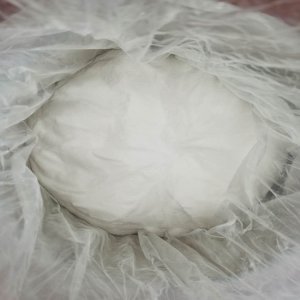8-Hydroxyquinoline
8-Hydroxyquinoline / CAS : 148-24-3
| Appearance | White to yellowish crystals | UN | 3077 |
| HS | 29334900 | DG Class | 9 |
| Synonyms | 8-Quinol; 8-Quinolol; 8-Oxyquinoline; Quinolin-8-Ol; Oxyquinoline; Hydroxyquinoline; 8-Quinolinol; 8HQ; 8-OQ; 8 Hydroxy Quinoline; 8Hydroxyquinoline | ||

- Email: yaosen@mail.chemball.com
- Whatsapp: 0086-13336062322
- Tel: 0086-571-86273270/88796269
latest price
Overview
Benefits
8-hydroxyquinoline can ensure continuous and stable supply;
The product quality is good, the technology is advanced, and there are not many products that can be produced domestically. It is relatively environmentally friendly and has few impurities.
Specification
Item | Standard | Result |
Assay of 8-Hydroxyquinoline % | 99 Min | 99.99 |
MP ℃ | 72-75 | 72-75 |
Ash Content % | 0.2 Max | 0.1 |
Uses
As a pharmaceutical intermediate, 8-hydroxyquinoline is the raw material for the synthesis of Oxyquinoline phthalyl sulfathiazole, chloroiodoquinoline and paracetamol. 8-hydroxyquinoline is also an intermediate of halogenated quinoline anti amoeba drugs, including quiniodoform, chloroiodoquinoline, diioquinoline and so on. These drugs play an anti amebic role by inhibiting intestinal symbiotic bacteria. They are effective for amebic dysentery and have no effect on extraintestinal amoeba protozoa. In recent years, it has been reported that this kind of drug can cause subacute spinal cord optic neuropathy, so it has been banned in Japan and the United States.
8-hydroxyquinoline can be dyestuff Intermediates and agrochemical Intermediates.
The sulfate and copper salt of 8-hydroxyquinoline are excellent preservatives, disinfectants and fungicides, such as Quinoline copper.
8-hydroxyquinoline is used as a reagent for the determination of bismuth, magnesium, copper, zinc and organic element nitrogen, as a complexing agent and extractant for precipitation and separation of metal ions.
8-hydroxyquinoline can be used as an inhibitor of RNA synthesis and has bactericidal and inhibitory effects on Trichophyton agrophytes, Myrothecium Verrucaria and Trichoderma viride
Adding 8-hydroxyquinoline into epoxy resin adhesive can improve the bonding strength and heat aging resistance to metals (especially stainless steel), and the dosage is generally 0.5 ~ 3 phr. 8-hydroxyquinoline can be used as a stabilizer for polyester resin, phenolic resin and hydrogen peroxide.
8-hydroxyquinolines also act as veterinary drug intermediates, mainly in the synthesis of haquinol. Haquinol is a veterinary drug substance mainly used for intestinal infectious diseases and prevention of forage mold infection. Haquinol can interfere with the synthesis of the mold cell wall and inhibit mold growth and reproduction by chelating with metal ions such as iron, copper and zinc, so that the bacteria cannot utilize the necessary metal ions, thereby inhibiting the growth and reproduction of the mold. In addition, haquinol acts directly on the gastrointestinal smooth muscle of animals and is particularly effective in dysentery-afflicted livestock by reducing gastrointestinal motility and increasing nutrient absorption.
Picture
Properties
Summary
Attribute classification
Agrochemicals > Pesticide Intermediates
API & Intermediate > Synthetic Anti Infective Drugs

























